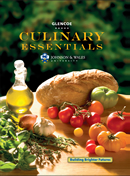
Culinary Essentials ©2010Chapter 6: The Dining ExperienceCheck Your Answers: After You ReadSection 6.1Review Key Concepts1. Casual-dining establishments: family-style restaurants, limited menu with traditional, child friendly favorites; neighbor hood establishments, lunch counter or coffee shop with simple, inexpensive, and generously portioned food; grills and buffets, self-service meals at budget prices, often all-you-can-eat; vending machines, low-cost food and beverages 24 hours a day.2. Both classical French service and Russian service are elaborate and elegant styles of service. In classical French service, some foods are prepared tableside, while in Russian/English service, each course is prepared in the kitchen and served on large platters. Two different servers perform Russian/English service, while French service has a four-member team. Both types of service require highly skilled servers. Practice Culinary Academics3. Social Studies Use at least two sources to come up with information about a historical restaurant. Consider using personal anecdotes of family or community owners who ate there, experiences of employees or owners of the restaurant, news items about the restaurant, or historical information found in local records or museums.4. English Language Arts Analyze the information provided on the menu about food preparation, ingredients, price, and the design and presentation of the menu to assign a demographic to each menu using the information about types of dining establishments from the section. 5. Mathematics The perimeter of 1 table = (2 × 42 in.) + (2 × 30 in.) = 84 in. + 60 in. = 144 in. Two tables pushed together is still 30 in. wide, but is now 84 in. long. The perimeter of this combined table = (2 × 84 in.) + (2 × 30 in.) = 168 in. + 60 in. = 228 in. Section 6.2Review Key Concepts1. To refill salt and pepper shakers, collect the shakers on a tray, and then empty them in the kitchen. Wash the shakers using a bottlebrush, and wash the shaker tops, unplugging the holes. Let tops and shakers dry completely. Fill the shakers, using the right grain size. Tap shakers to clear out air pockets. Then, return them to tables.2. Lead crystal glassware is hard, clear, and bright. It is expensive and easily chipped, and therefore is usually used only in fine-dining establishments. Heat-treated glassware is strong and resists breaking and chipping. This type of glassware is used by most foodservice operations. 3. To change a table linen, start with a tabletop covered only by the soiled cloth. Fold back the soiled cloth by ¼ of its length. Place the clean cloth over the folded portion, so that it is opened one fold and hangs over the edge. Hold the corners of both cloths and pull them toward the other end of the table. Let go when you reach the end. Bring the hanging corners of the soiled cloth to the other corners of the folded cloth. Hold all corners and drop the top edge of the new cloth over the table. Fold the soiled cloth, and place it on a tray. Empty the crumbs in a trash can, and then place the soiled linen in a linen bag. 4. An edible centerpiece is made from items that can be eaten, such as fruit or carved vegetables. These centerpieces can also be sugar-based creations, which showcase the artistic skills of the chef. Practice Culinary Academics5. Mathematics The area of the place mat: 20 in. × 14 in. = 280 square in. |  |















